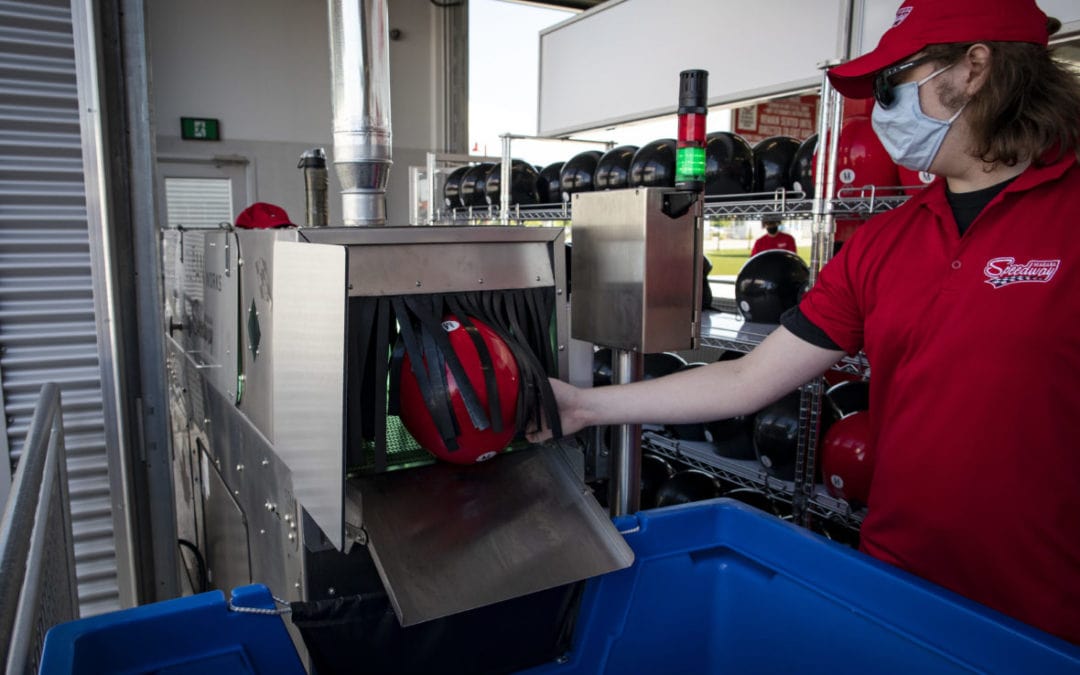The Niagara Falls region hopes to recover from COVID-19 with Canadian tourists’ help. Will it work?
Text by James Dunne; Photos by Evan Mitsui
In a normal year, tourists to Ontario’s Niagara region would spend about $2.4 billion at the area’s close to 3,000 businesses.
But 2020 isn’t normal.
“Our businesses suffered revenue losses of 95 per cent,” Janice Thomson, CEO of Niagara Falls Tourism, said of the toll of the coronavirus pandemic. “It’s heartbreaking, because it impacted the lives of so many.”
Niagara Falls Mayor Jim Diodati told CBC News the pandemic has cost about 98 per cent of the 40,000 people who work in Niagara’s tourism sector their jobs at area businesses such as hotels, the Fallsview Casino, the campy attractions on Clifton Hill and more.
The concentration of tourism jobs relative to total jobs in the Niagara region is 1.7 times that of Canada, according to Niagara Economic Development, a nonprofit organization focused on growing business in the region. The area boasts more than 1,200 full-service restaurants and 300 places to stay.
While Americans and other international visitors historically account for a third of business, travel restrictions and border closures have changed all that.
The region hopes Canada Day will spark a tourism comeback among Canadians, and Niagara Falls Tourism is hoping to lure them with a pandemic-inspired promise: “safe to play and safe to stay.”
CBC News talked to several businesses about how they hope to recover from COVID-19.
Parks and natural wonders
Niagara Falls, Canada’s most-popular natural attraction, welcomes 12 million tourists a year while another two million people visit the Niagara region, which is well known for its orchards, wineries, hiking trails and scenic vistas.
The Niagara Parks Commission maintains most of the region’s natural areas and heritage sites, as well as many of its services. It also operates attractions, golf courses and restaurants.
The commission doesn’t receive government funding and relies on visitors to survive. Last year, it hit a revenue high of $127.3 million.
The impact of COVID-19 has been dramatic, said CEO David Adames.
The months of April, May and June brought the commission $5.6 million in profit in 2019.
But for the same three months in 2020, Adames forecasts a loss of $7.6 million on account of the lockdowns that have kept people confined to their homes during the pandemic.
The commission is using a line of credit to pay bills. “It will take us a couple of years to recover,” Adames said.
At summer’s peak in 2019 it had 1,800 workers, this year, it’ll be just under 900, with most lost positions being student jobs. All parks staff will be required to wear masks, as will guests visiting attractions.
Visitors’ hands will be sprayed with sanitizer, and the parks commission will reduced the capacity at its sites to ensure physical distancing.
At the Journey Behind the Falls attraction, which allows people to view the falls from a series of observation decks and tunnels at the foot of and behind the falls, a thermal camera has been installed to scan visitors’ temperatures before entry. Those with high readings will be stopped and interviewed.
Adames says the measures are “things that people will want to see and expect to see.” He hopes they’ll keep people safe and make them feel at ease so they stay and spend.
Tours and attractions
There are more than 300 businesses in Niagara built around amusement or recreation activities, including a boat ride into the waterfall’s spray.
Hornblower Niagara Cruises vice-president Mory DiMaurizio is eager for his Canada Day launch, even though he’s limiting his 700-passenger boats to half capacity.
His customers will have to wear masks, have their temperatures read and accept hand sanitizer before boarding.
DiMaurizio will have half his normal staff, but he’s not expecting to bring in half his normal revenue.
“If we get 50 per cent capacity, I’ll be thrilled,” he said. “I think it’s gonna be something less than that, perhaps 30 per cent.”
Nearby, on Clifton Hill, the Great Canadian Midway amusement park and Zombie Attack adventure ride remain closed because the operator says they’re not ready to meet current safety protocols.
But the strip’s top three draws — the Niagara SkyWheel, Dinosaur Adventure Mini Golf and the Niagara Speedway go-kart track — have been opened. A custom-built machine sanitizes go-kart helmets between rides.
Joel Noden, Clifton Hill’s marketing director, says he’s happy to be open again, even if visitors may be hesitant.
“If it takes them a little longer to gain that trust in what we’re doing, then so be it,” he said.
Anna Pierce, vice-president and general manager of Niagara Helicopters, feels more urgency. She needs business to pick up.
The company had to lay off 18 people — almost 60 per cent of its staff. Two pilots will be leading sightseeing flights this summer rather than six.
“We thought it was bad with SARS. That was nothing compared to what this actually did,” she said. “And it ain’t over.”
Pierce is hoping to reach 50 per cent of last year’s sales, but 80 per cent of her customer base usually comes from outside Canada. It will be difficult in light of travel restrictions and the fact Canada’s border with the U.S. remains closed.
She says physical distancing, sanitization, masks and reduced capacities are mandatory on all flights as of the Canada Day reopening.
“We can’t completely get rid of COVID with these measures, but we can sure as hell try to reduce it as much as possible,” she said. “We can’t afford not to.”
Continue reading article at: https://newsinteractives.cbc.ca/longform/niagara

